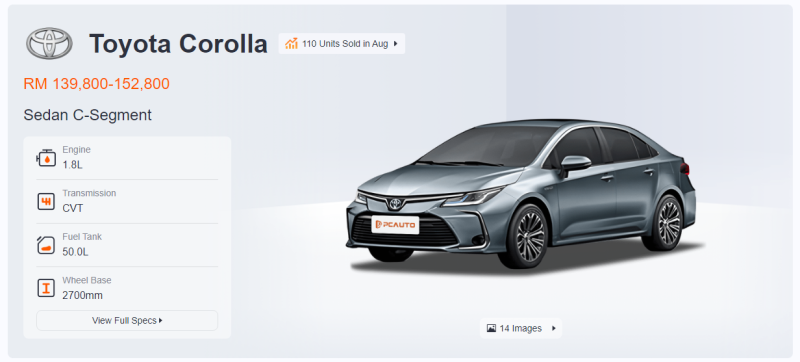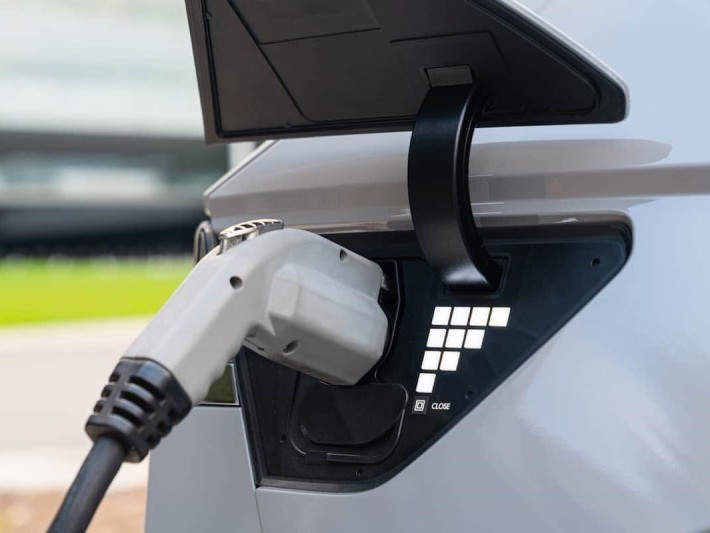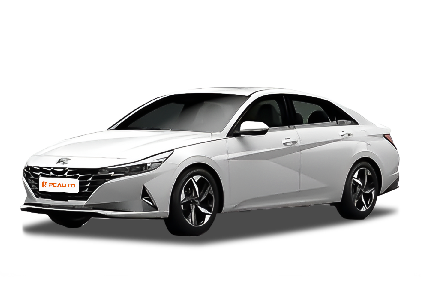Q
Is the 2021 Hyundai Elantra reliable?
The 2021 Hyundai Elantra has an overall excellent reliability performance in the Malaysian market. It is equipped with the 1.6L Gamma II engine and the 2.0L Nu series engine, which feature mature technologies. Matched with a 6 - speed automatic - manual transmission or a CVT, the powertrain has been well - proven in the long - term market, with a relatively low failure rate. It is especially suitable for the local hot and rainy climate.
The standard - equipped SmartSense active safety system (including automatic emergency braking and lane - keeping assist) in this model further enhances driving safety. Moreover, the locally assembled (CKD) version has more advantages in parts supply and after - sales maintenance costs.
It's worth noting that the Elantra ranked among the top three in its class in the 2021 J.D. Power Vehicle Dependability Study (VDS) in the United States. The proportion of galvanized steel sheets in its body reaches 52%, effectively delaying the common rust problems in tropical regions.
For Malaysian consumers, it is recommended to regularly check the stability of electronic devices (such as touch - screens) in high - temperature and high - humidity environments. They should also give priority to the 5 - year/300,000 - kilometer warranty package provided by the original manufacturer to reduce long - term usage costs. Meanwhile, the officially certified Hyundai service centers in Malaysia have covered major states, ensuring the convenience of after - sales service.
Special Disclaimer: This content is published by users and does not represent the views or position of PCauto.
Related Q&A
Q
What oil filter does a 2021 Hyundai Elantra take?
The 2021 Hyundai Elantra (known as Hyundai Elantra or Avante in the Malaysian market) typically uses an oil filter with the original part number 26300 - 35505. This is a model specifically designed for Hyundai Gamma series 1.6L and 2.0L engines and is compatible with mineral oil, semi - synthetic, and fully synthetic oils.
In Malaysia, car owners can also choose certified aftermarket filters from well - known brands such as MANN Filter W811/80, Fram PH9688, or Bosch 3330. These products are easily available at local auto parts stores or e - commerce platforms like Lazada and Shopee.
When selecting an oil filter, pay attention to its filtration efficiency (it is recommended that the β value be ≥ 20), burst pressure resistance (≥ 200 psi), and the material of the rubber seal ring (fluororubber is more durable). These parameters directly affect the engine protection effect.
It is recommended to replace the filter every 5,000 to 10,000 kilometers or every 6 months (depending on the type of oil and driving conditions). In tropical climates like Malaysia's hot and dusty environment, the replacement cycle can be appropriately shortened.
If you replace the filter yourself, you need to use a filter wrench with a 74 - 80mm specification. Also, remember to apply a thin layer of oil on the seal ring of the new filter to ensure a good seal.
Hyundai's authorized service centers in Malaysia, such as Hyundai - Sime Darby Motors, also offer original maintenance packages that include filters and oils that meet the specifications, which is suitable for car owners who pursue original warranty services.
Q
Does a 2021 Hyundai Elantra need synthetic oil?
For the 2021 Hyundai Elantra in the Malaysian market, synthetic oil is recommended. The original manufacturer suggests using 5W - 20 or 5W - 30 full - synthetic oils that meet the API SP or ACEA C2 standards. This type of oil can better adapt to the high - temperature working conditions in the tropical climate, providing excellent anti - wear protection and cleaning performance. At the same time, it can extend the oil change interval to about 10,000 kilometers or 6 months.
Hyundai's Smartstream engines use precision components. The high - temperature stability and low - temperature fluidity of synthetic oil can fully protect the turbocharger and GDI fuel system, preventing sludge buildup in Malaysia's stop - and - go traffic conditions. Car owners need to pay attention to choosing oils with ILSAC GF - 6 certification to ensure fuel economy. The hot and humid local environment may accelerate oil oxidation, so regularly checking the oil level is more important than the intervals specified in the manual.
If you often drive short distances or idle for long periods, you can consider shortening the oil change interval to 8,000 kilometers. However, there's no need to deliberately pursue higher - grade oils. Just follow the viscosity range specified in the manual. Some repair shops may recommend mineral oil to reduce costs, but long - term use may affect the engine's lifespan, especially for models equipped with CVVT technology.
Q
How to check oil life in 2021 Hyundai Elantra?
To check the oil life of the 2021 Hyundai Elantra, first start the vehicle and enter the dashboard menu. Use the control buttons on the right side of the steering wheel to find the "Oil Life" option, then press the "OK" button to view the remaining percentage. This system estimates the oil condition by integrating data such as engine running time, RPM, and temperature through an algorithm. It is recommended to change the oil every 5,000 to 8,000 kilometers or every 6 months, whichever comes first. However, considering the hot climate in Malaysia and the frequent start - stop driving conditions, the actual interval should be appropriately shortened.
It's worth noting that Hyundai's intelligent oil monitoring system can more accurately reflect the actual oil consumption, which is more scientific than traditional fixed - interval maintenance. Nevertheless, you still need to regularly check the dipstick to ensure the oil level is between MIN and MAX. If the oil warning light appears on the dashboard, immediate maintenance is required.
For Malaysian car owners, it is recommended to choose fully synthetic oil that meets API SP or ACEA C2 standards to cope with the high - temperature environment. At the same time, develop the habit of manually checking the oil every month when the vehicle is cold. This is especially important for turbocharged models, as it can effectively prevent engine wear caused by oil film rupture.
Q
How often does a 2021 Hyundai Elantra need an oil change?
According to the official recommendation of Hyundai, for the 2021 Hyundai Elantra in Malaysia, under normal driving conditions, it is recommended to change the engine oil every 10,000 kilometers or 12 months, whichever comes first. If you often drive in high - temperature, dusty or short - distance congested road conditions, you may consider shortening the interval to every 5,000 to 7,500 kilometers to protect the engine. The hot and humid climate in Malaysia may accelerate the deterioration of engine oil performance. Therefore, it is also important to regularly check the condition of the engine oil (such as color and viscosity). At the same time, it is recommended to use fully synthetic engine oil of API SP or ACEA C2/C3 grade recommended by the original manufacturer to ensure the best lubrication and cleaning effects. The Smartstream engine technology equipped in the Hyundai Elantra is quite sensitive to the quality of engine oil. Following the maintenance schedule can effectively extend the engine's lifespan and maintain fuel economy. Car owners can also track the next maintenance time through the in - vehicle maintenance reminder system or the MyHyundai app. It should be noted that there may be slight differences in Elantras of different years or versions. For specific information, you can refer to the vehicle handbook or consult the authorized service center in Malaysia for personalized advice.
Q
What transmission is in the 2021 Hyundai Elantra Preferred?
The 2021 Hyundai Elantra Preferred available in the Malaysian market is equipped with an Intelligent Variable Transmission (IVT). This gearbox is an advanced technology independently developed by Hyundai. By mimicking the shifting logic of traditional automatic transmissions, it offers a smoother driving experience and higher fuel efficiency, making it particularly suitable for the frequent stop - and - go traffic conditions in Malaysian cities.
The IVT gearbox features a chain - drive design. Compared with the steel - belt structure of traditional CVTs, it is more durable. Additionally, it comes with multiple driving modes (such as Eco/Sport) to meet different driving needs. It's worth mentioning that Hyundai offers a 5 - year or 300,000 - kilometer warranty (whichever comes first) for this gearbox, giving Malaysian car owners more peace of mind when using their vehicles.
Among models in the same class, Elantra's IVT technology is well - known for its low maintenance costs. You just need to regularly change the transmission fluid to keep it in good condition. It is more suitable for the hot and humid climate in Malaysia compared to dual - clutch transmissions.
If you have higher requirements for the driving experience, you can also consider the 7 - speed dual - clutch transmission offered in the Elantra N Line version. However, the Preferred version is mainly targeted at family - use comfort, and the IVT remains a more cost - effective and practical choice.
Q
What battery does a 2021 Hyundai Elantra take?
The 2021 Hyundai Elantra in the Malaysian market typically uses a 12V lead - acid battery. Specifically, it is recommended to use the 55D23L (suitable for the 1.6L and 2.0L gasoline engine versions) or a maintenance - free battery with a capacity of 60Ah or more. The cold cranking amps (CCA) are recommended to be above 500A to ensure starting performance in tropical climates. When choosing a battery, pay attention to whether the terminal position (positive on the right) and battery size (approximately 232mm×173mm×225mm) match the original factory. It is recommended to give priority to original - equipment brands such as Hyundai Mobis or well - known third - party brands such as Panasonic and Varta.
For the hybrid version, a dedicated lithium - ion battery pack is required. In such cases, it is recommended to go directly to a Hyundai authorized service center. In daily use, it is recommended to check the battery's health every two years. Especially in the high - temperature and high - humidity climate of Malaysia, the battery life may be shortened to 2 - 3 years. Regularly cleaning the electrode terminals and avoiding long - term short - distance driving can extend the battery life. If you notice slow starting or dimming headlights, check the voltage immediately.
Hyundai's intelligent power management system will actively optimize the charging efficiency, but installing too many electronic devices may increase the battery load. When purchasing, you can consider high - performance batteries with EFB (Enhanced Flooded Battery) or AGM (Absorbent Glass Mat) technology to meet higher power demands.
Q
What oil does the 2021 Elantra use?
For the 2021 Hyundai Elantra in Malaysia, it is recommended to use fully synthetic engine oil with a viscosity of 5W - 20 or 5W - 30 that meets API SP standards or higher. The specific choice should refer to the instructions regarding climate conditions and driving habits in the user manual. In hot climates or during aggressive driving, 5W - 30 can be prioritized to provide better high - temperature protection. Hyundai usually recommends using Hyundai Premium engine oil or products of certified brands such as Shell and Castrol with the same specifications. It is advised to change the oil every 10,000 kilometers or 12 months, whichever comes first.
It's worth noting that in the oil viscosity numbers, the "W" stands for winter performance. The smaller the first number, the better the low - temperature fluidity; the larger the second number, the stronger the high - temperature protection. In Malaysia's year - round high - temperature environment, proper attention can be paid to the high - temperature viscosity index. Turbocharged models have higher requirements for oil cleanliness and anti - shear performance. Be sure to choose fully synthetic oil and strictly follow the maintenance cycle.
If the vehicle is still under warranty, it is recommended to use the engine oil specified by the manufacturer to avoid warranty disputes. Meanwhile, regularly checking the oil level can help detect potential engine problems in a timely manner.
Q
Does the 2021 Elantra have CVT?
The 2021 Hyundai Elantra models available in the Malaysian market are indeed equipped with a CVT (Continuously Variable Transmission). This transmission is renowned for its smooth shifting experience and fuel efficiency, making it particularly well-suited for urban driving environments. CVT technology continuously adjusts the gear ratio, keeping the engine consistently within its most efficient RPM range. This enhances fuel efficiency while minimizing the jerky shifts associated with traditional automatic transmissions. While CVT is the primary transmission option in Malaysia, certain overseas markets may offer alternatives like dual-clutch transmissions (DCT) or manual transmissions. For drivers prioritizing daily commuting comfort and fuel economy, the CVT represents an ideal choice. Hyundai has tuned this transmission to balance responsiveness with reliability. When considering a used or new vehicle purchase, verify specific configurations through official channels and schedule a test drive to experience the CVT's performance firsthand. Additionally, regular transmission fluid maintenance and adherence to manufacturer-recommended service intervals will extend the CVT's lifespan.
Q
Is the 2021 Hyundai Elantra 2.0 L?
The 2021 Hyundai Elantra does offer a 2.0-liter naturally aspirated engine version in the Malaysian market. This engine has a maximum output power of 149 horsepower and a peak torque of 179 Nm. It is paired with a 6-speed automatic transmission, focusing on a smooth driving experience and fuel economy, which is suitable for daily commuting needs. The model adopts Hyundai's latest "Sensuous Sportiness" design language, making its appearance more sporty. At the same time, it comes standard with an 8-inch touchscreen, Apple CarPlay/Android Auto, and the Hyundai SmartSense active safety system, showing outstanding cost - effectiveness.
It's worth mentioning that the Elantra in the Malaysian market is different from the 1.6-liter turbocharged version in some overseas markets. The 2.0-liter naturally aspirated engine is more suitable for the local road conditions and fuel quality, and its maintenance cost is relatively low. In recent years, Hyundai has been continuously making efforts in the Malaysian market. As its main sedan product, the Elantra is more competitive than Japanese models in the same class in terms of space performance and technological configuration. Especially, the five - year unlimited - mileage warranty policy can make consumers use the car more at ease.
If you value practicality and the richness of configurations, this car is worth considering. Of course, it is recommended to take a test drive to see if the power performance meets your personal expectations.
Q
What kind of engine is in the 2021 Elantra essential?
The 2021 Hyundai Elantra Essential is equipped with a 1.6-liter Gamma naturally aspirated four-cylinder engine. It has a maximum output power of 123 horsepower and a peak torque of 154 Nm, paired with a 6-speed automatic manual transmission (6AT). This engine is well - known for its reliability and fuel economy, making it suitable for both urban commuting and long - distance driving in Malaysia.
Compared with turbocharged engines, naturally aspirated engines have a simpler structure and lower maintenance costs, which is ideal for consumers who value practicality. Moreover, this engine meets the emission standards of the Malaysian market. As an entry - level model, the Elantra Essential's power configuration strikes a balance between the smoothness of daily driving and fuel efficiency. It's a great choice for Malaysian consumers with limited budgets but a preference for brand reliability.
The linear power output of the naturally aspirated engine in the high - speed range is also well - suited to the mountainous road conditions in Malaysia. The shifting logic of the 6AT transmission has been optimized to ensure both comfort and response speed.
Latest Q&A
Q
What is the CC of Honda City 2020?
The 2020 Honda City hits the Malaysian market with two engine choices: a 1.5-liter SOHC i-VTEC naturally aspirated petrol engine and a 1.5-liter DOHC i-VTEC hybrid system. Let's break down the specs. The petrol unit displaces 1497cc, cranking out 121 horsepower and 145 Nm of torque. On the hybrid side, it pairs that same 1.5-liter engine with an electric motor, resulting in a combined 109 horsepower – this one's all about fuel sipping efficiency.
Now, CC (cubic centimeters) is the measure of engine displacement, and it directly impacts how a car performs and drinks fuel. Typically, a bigger displacement means more power, but it can also mean higher fuel bills. The City's 1.5-liter sweet spot is a big reason it's so popular in Malaysia – it strikes that perfect balance between pep and fuel economy, handling both city commutes and longer drives like a champ.
But the 2020 City isn't just about the engine bay. It also comes loaded with Honda Sensing safety tech and a modern, fresh interior design, which really ups its game in the market. For Malaysian buyers, this car ticks all the boxes: practical, easy on the wallet at the pump, and packed with the latest tech. It's a solid all-rounder.
Q
How much does a Honda 2020 cost?
Prices for the 2020 Honda models in Malaysia vary quite a bit depending on the specific model and how it's kitted out. Take the Honda City, for example – you're looking at roughly RM70,000 to RM90,000. The Civic sits a bit higher, usually ranging from around RM110,000 up to RM140,000, while the CR-V typically falls between RM140,000 and RM170,000. exact figures hinge on the trim level, engine specs, and any extra add-ons you might go for.
When buying a new car in Malaysia, it's not just the sticker price you need to factor in. There's registration fees, insurance, road tax – all that extra stuff adds up and affects the final on-the-road cost.
Over in the used car market, 2020 Honda models will fluctuate in price too, based on mileage, condition, and remaining warranty. You can generally pick one up for 20% to 40% less than a brand-new equivalent.
If you're in the market, I'd definitely recommend shopping around different dealers to compare quotes. It's also worth checking out any ongoing Honda promotions or financing deals – those can really help you save some cash.
Hondas have a solid rep in Malaysia for being reliable and fuel-efficient, especially popular models like the City and Civic. They're pretty affordable to own long-term, and getting them serviced or repaired is relatively straightforward.
Q
What is the top speed of Honda City 2020?
The 2020 Honda City maxes out at around 190 km/h, which is the top speed you can squeeze out of its 1.5-liter i-VTEC naturally aspirated engine under ideal conditions. Of course, in the real world, you might see a slight difference depending on road conditions, how much you're carrying, or the weather. This car is pretty popular in the Malaysian market, and it's not just because of its solid performance—it's also about that fuel efficiency and nimble handling that makes city driving a breeze. The CVT gearbox in the City does a good job smoothing out power delivery, so acceleration feels seamless and efficient, whether you're commuting daily or hitting the highway for a longer drive. For Malaysian buyers, beyond just top speed, overall performance and maintenance costs matter a lot, and the City delivers here too. Its low trouble rate and wide service network make life easier for owners. If you're craving a bit more zip, there's always the Honda City RS variant. It gets some tweaks to the engine tuning and sportier bits, but don't expect a huge jump in top speed—these cars are all about balancing practicality with a bit of driving fun, after all.
Q
How safe is the Honda City 2020?
The 2020 Honda City holds its own when it comes to safety, packing in 6 airbags, Vehicle Stability Assist (VSA), Anti-lock Braking System (ABS), and Electronic Brake-force Distribution (EBD). That's a pretty solid setup for the class, and it should do a good job of keeping you protected during those daily drives around Malaysia. Honda's ACE Body Structure is also on board here, which is designed to effectively disperse crash energy and boost occupant safety in the event of a collision. It's worth highlighting that the 2020 City scored a 5-star rating in ASEAN NCAP crash tests, which is a solid stamp of approval for its safety credentials. For Malaysian buyers, picking this car means you're not just getting Honda's usual reputation for reliability, but also a decent level of safety kit. If safety is a top priority for you, it's definitely worth checking out the specific safety features when you're looking to buy – things like whether it comes with Honda Sensing. That suite includes handy advanced features like Adaptive Cruise Control and Lane Keeping Assist, which can go a long way in making your drives even safer.
Q
What is the fuel economy of the Honda City 2020?
The 2020 Honda City demonstrates excellent fuel efficiency in the Malaysian market. The variant equipped with the 1.5L i-VTEC petrol engine and CVT transmission has an official combined fuel consumption of 5.4 L/100km (approximately 18.5 km/L). The hybrid e:HEV variant is designed for even higher efficiency, though its specific fuel consumption figure should be verified with official sources or latest reviews, as the widely cited 3.4 L/100km (approximately 29.4 km/L) lacks direct support in the provided search results and may not reflect real-world conditions in Malaysia. Both powertrains closely align with the demands of Malaysian consumers who prioritize fuel economy. Actual fuel consumption may vary depending on factors such as driving habits, road conditions, and vehicle load. Therefore, adhering to a regular maintenance schedule is crucial for maintaining optimal fuel efficiency.
Given Malaysia's hot and humid climate, judicious use of the air conditioning system and maintaining the recommended tire pressure can contribute significantly to improving fuel economy. As a top-selling model in the B-segment sedan market in Malaysia, the Honda City's fuel efficiency remains competitive against its peers, making it a practical choice for daily commuting and family use. The e:HEV hybrid version, in particular, presents a compelling option for environmentally conscious drivers seeking to minimize long-term running costs, pending verification of its specific fuel economy claims.
View MoreRelated News

Recommendations for popular family sedans around RM 150,000 that balance handling, comfort, and aesthetics!
JohnOct 11, 2024

Modern Ioniq 5 N Lands in Malaysia: Track-Level Performance Electric Vehicle is Here, Priced Possibly Below RM 400,000?
JohnSep 10, 2025

Hyundai's Big Return to Malaysia: Top 5 Models Expected
MichaelMay 30, 2025

580,000 km & 87.7% Battery Health: Ioniq 5’s Incredible Durability
MichaelMay 6, 2025

Revolutionizing Hybrids: Hyundai’s New System vs. Toyota's Hybrid System
Kevin WongApr 22, 2025
View More


















Pros
Cons